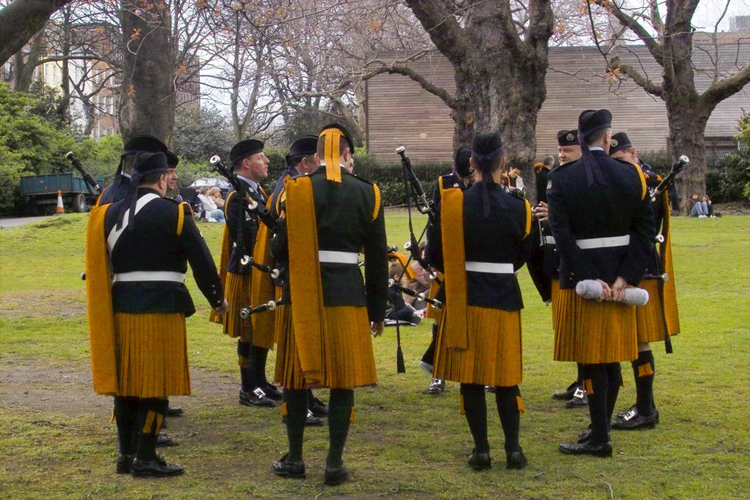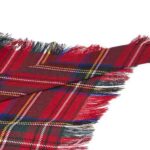There is a widespread belief that all kilts are identical, but we’re about to surprise you by revealing that they aren’t. The principle behind them could be the same, They are all made from material, and they can inspire more than a tiny amount of interest in what’s under the surface. However, there are distinct distinctions between the Scottish and an Irish Kilt, and an error could result in you being in hot water!
We love friends and we’d like to ensure that you have. To lessen the chances of you making a faux mistake, we’ve determined to help you stay ahead of the game and tell you the basics you should be aware of (and likely didn’t realize you had to be aware of) regarding discerning the difference between an Irish and a Scottish Kilt.
The History
To understand the distinctions between the two varieties of kilts It is essential that you understand where and how they were created.
Kilts first became popular in Scotland around the 16th century. In Scotland, they were called “Feileadh more. They were simple and practical but not very elegant – and comprised only one length of thick material that was designed to protect users from brutal Highland climate.
The item was regarded as practical and not patriotic. However, that changed after the federal government banned the dress, in fear that it could increase the number of rebels in the Jacobite Rebellion. Human nature led to the fact that when it was banned everybody and their dog would want one. The kilt we have today has begun to appear in its current appearance around the 19th century.
Ireland like all other countries chose to approach things slightly differently. The kilt that we know it came from the popularity of Irish Nationalism, as the response to the ‘progressive’ anglo-ism’ of Ireland. In simple words, the fervent Irish were against what they perceived as an English influence on their beliefs, practices, and fashions, making a flurry of popular the development of a distinctively Irish style.
The Saffron Kilt was soon the style that was popular. This kilt was usually mustard-colored, without plaid or tartan designs however, it had a shamrock design that was attached to the pleat.
One thing both designs are likely to share is their usage in combat. Both teams would wear their kilts in an environment of war that was symbolic instead of defensive. It is hard to imagine wool providing enough protection!
The Differences
In addition to originating from various humble origins, There are many characteristics of modern-day kilts, which differentiate the Scots from the Irish. One of the most effective methods of determining who you’re talking with and avoiding embarrassing embarrassment are:
Crests
The Irish and Scottish Kilts feature distinctive crests. These can be used to identify the wearer. when the wearer experiences the overwhelming urge to get to battle, then they have to know who’s with them.
Kilts are often worn during Scottish weddings and that is the place you’re most likely to see the dress. The clan crest of the newly formed family will be attached to the tartan of the spouses to show that they are accepted. Plenty of opportunities for passive aggression in this! Irish crests on the other hand, typically depict a shamrock, instead of the clan crest.
Sporrans
An explanation that is worthy of their own is that sporrans are a common accessory. They’re usually worn alongside the kilt, slung around the waist, and are is popular in both Irish as well as Scottish kilts. In simple words, a sporran functions as equivalent to a pocket essential to the kilt, but it is not a suitable way to store your personal belongings, or even regain the items in a polite manner without fear of being arrested.
Similar to crests, this difference is fairly simple. Scottish people with sporrans have a clan crest that allows for simple identification, while Irish types tend to prefer the use of a Celtic symbol like the Shamrock. This can’t really assistance if you are unable to remember the name of the person, but it will at the very least allow you to pinpoint the geographical area.
Jackets
One of the most important factors to determine the authenticity of an Irish or Scottish kilt is that it is completely separate from the actual garment that is the jacket. Both sides wear a jacket that matches their kilts, but the real devil lies in the finer details.
Scots typically wear the Prince Charlie jacket for formal occasions. It can be distinguished by the lapels and tails, in addition to the ornaments on the sleeves and the tails. The jackets are typically paired with a bow tie an eagle collared shirt and a waistcoat.
Argyle jackets are also used for an informal event. You can easily identify them by the intricate buttons on the buttons of the cuffs as well as flaps as well a bow or necktie, or a regular shirt.
Irish Kilt wearers would prefer wearing a Brian Boru jacket for formal occasions like weddings. This is remarkably similar in design and cut to Prince Charlie, so you must look more attentively to spot the differences.
Hats
Although it is not often used at times, Scottish wearers may add the Glengarry hat to complement the overall appearance. That raises the question…how do you spot the Glengarry hat? It’s likely that it won’t be a problem and you shouldn’t worry about it at night.
Tartan
It is not surprising that the biggest difference between the two kilts is through the tartan. Scottish tartans represent a specific clan, and every family will have a distinct tartan, determined by the surname.
There are at present more than 25,000 registered Scottish tartans in the records. There is virtually no idea of the family a person is a part of unless you possess the following: a) an image-based memory or) an unusually abundant amount of time to spare, however, this distinction will allow you to identify the difference between a Scot.
Irish tartans On the other hand they are designed to represent the various districts and counties of Ireland. Those who come from Cork for instance will show this by sporting their Cork County Tartan. The general rule is that the majority of them are green, though there are certain exceptions.
Argyle jackets History Scottish and irish kilt Irish Kilt Prince Charlie jacket Scottish And Irish Kilt
Last modified: January 31, 2022




